Clinical and Radiographic Outcomes for Patients with Cervical Adjacent Segment Disease Treated with Anterior Cervical Discectomy and Fusion with Integrated Interbody Spacers.
Date
2023-12
Journal Title
Journal ISSN
Volume Title
Repository Usage Stats
views
downloads
Citation Stats
Attention Stats
Abstract
Introduction
Anterior cervical discectomy and fusion (ACDF) is among the most common spine procedures. Adjacent segment disease (ASD), characterized by degenerative disease at an adjacent spinal level to a prior fusion, is a well-recognized and significant sequela following ACDF. Adjacent segment ACDF may be considered after the failure of non-surgical options for patients with symptomatic ASD. This study aimed to assess the incidence of dysphagia and other complications as well as radiographic outcomes in adult patients who have undergone ACDF with an integrated interbody spacer device for symptomatic ASD.Methods
This was a retrospective review of patients who underwent ACDF for symptomatic ASD with commercially available integrated interbody spacers by three spine surgeons at an academic institution from March 2018 to April 2022. Demographic, radiographic, and postoperative data were collected, including dysphagia, device-related complications, and the need for revision surgery.Results
There were 48 patients (26 male, 22 female) who met inclusion criteria (mean age 59.7 years, mean body mass index 19.5 kg/m2) who underwent ACDF for symptomatic ASD (1one-level, n = 44; 2-level, n = 4). Overall, 12 patients (25%) experienced dysphagia postoperatively before the first follow-up appointment. Nine of 44 (20.4%) of 1-level ACDF patients experienced dysphagia, and 3 of 4 (75%) of 2-level ACDF patients experienced dysphagia. Three patients had severe dysphagia which prompted an otolaryngology referral. Two of those patients remained symptomatic at 6 weeks postoperatively. Of 43 patients with prior plate cage systems, none required hardware removal at the time of surgery. Preoperative global and segmental lordosis were 9.07° ± 8.36° (P = 0.22) and 3.58° ± 4.57° (P = 0.14), respectively. At 6 weeks postoperatively, global and segmental lordosis were 11.44° ± 9.06° (P = 0.54) and 5.11° ± 4.44° (P = 0.44), respectively. This constitutes a change of +2.37° and +1.53° in global and segmental lordosis, respectively. The mean anterior disc height change between preoperative and immediate postoperative time points was 6.3 ± 3.1 mm. Between the immediate postoperative and 6-week postoperative time points, the mean anterior disc height change was -1.5 ± 2.7 mm. Between the immediate postoperative and 3-month postoperative time points, the mean anterior disc height change was -3.7 ± 5.0 mm. The posterior disc height changes at the same time points were 2.5 ± 1.7 mm, -0.4 ± 1.8. and -0.5 ± 1.4 mm, respectively. This fusion rate was 50% and 70% at 6 months and 1 year post-surgery, respectively.Conclusions
ACDF with integrated spacer is a viable alternative to traditional plate-cage systems for symptomatic ASD. An advantage over traditional plate-cage systems is that the removal of prior instrumentation is not needed in order to place implants. Based on a review of the literature, these standalone systems allowed for a shorter operative time and had less incidence of dysphagia than plate-cage systems for ASD after ACDF. The different standalone and plate-cage systems used in treating ASD after ACDF surgeries should be compared in prospective studies.Type
Department
Description
Provenance
Subjects
Citation
Permalink
Published Version (Please cite this version)
Publication Info
Zaidi, Saif E, Vishal Venkatraman, David AW Sykes, Jessica Albanese, Melissa M Erickson, Clifford L Crutcher, C Rory Goodwin, Michael W Groff, et al. (2023). Clinical and Radiographic Outcomes for Patients with Cervical Adjacent Segment Disease Treated with Anterior Cervical Discectomy and Fusion with Integrated Interbody Spacers. World neurosurgery, 180. pp. e514–e522. 10.1016/j.wneu.2023.09.101 Retrieved from https://hdl.handle.net/10161/31365.
This is constructed from limited available data and may be imprecise. To cite this article, please review & use the official citation provided by the journal.
Collections
Scholars@Duke
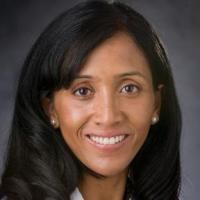
Melissa Maria Erickson
I am a spine surgeon who provides surgical management of cervical, thoracic and lumbar spine conditions, including cervical myelopathy, herniated discs, deformity, stenosis, tumor and trauma. I provide both minimally invasive procedures as well as traditional surgical techniques.
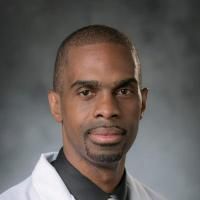
Courtney Rory Goodwin
Associate Professor of Neurosurgery, Radiation Oncology, Orthopedic Surgery.
Director of Spine Oncology,
Associate Residency Program Director
Third Year Study Program Director Neurosciences, Duke University School of Medicine
Director of Spine Metastasis, Duke Center for Brain and Spine Metastasis, Department of Neurosurgery
Duke Cancer Institute, Duke University Medical Center
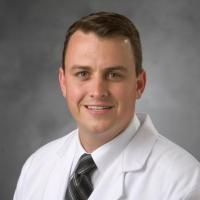
Peter Michael Grossi
I’ve wanted to be a doctor for as long as I can remember. I grew up in a suburb of Washington, DC, came to Duke for medical school in 1998, and have been here ever since. I chose neuroscience as my undergraduate major at Amherst University in MA, and stayed with neurosurgery because I was fascinated with the brain and its functions. I enjoy caring for my patients and seeing someone experience a good outcome that positively changed their life. When I’m not working, I enjoy spending time with my wife, who is also a doctor, and our two young daughters. I play golf when I can, which is not often, and really enjoy cooking. If I hadn’t chosen neurosurgery for my career, I would have gone to culinary school.
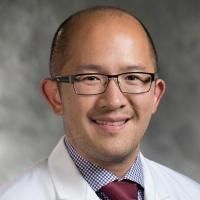
Khoi Duc Than
I chose to pursue neurosurgery as a career because of my fascination with the human nervous system. In medical school, I developed a keen interest in the diseases that afflict the brain and spine and gravitated towards the only field where I could help treat these diseases with my own hands. I focus on disorders of the spine where my first goal is to help patients avoid surgery if at all possible. If surgery is needed, I treat patients using the most advanced minimally invasive techniques available in order to minimize pain, blood loss, and hospital stay, while maximizing recovery, neurologic function, and quality of life. In my free time, I enjoy spending time with my family and friends. I am an avid sports fan and love to eat. I try to stay physically fit by going to the gym and playing ice hockey.

Michael Martin Haglund
My clinical areas of expertise include spinal surgery, especially cervical spine surgery where I have performed almost 8,300 cervical spine procedures and recently was ranked the top cervical spine surgeon in the country by MPIRICA (an analytical company that reviews surgical outcomes). I believe the whole patient is important and we emphasize time with the patient and careful discussions regarding possible surgery. Our excellent results are due to a great team of physicians, nurses, CRNAs, and anesthesiologists. I also believe in the spiritual side in taking care of my patients. As a design surgeon we are developing better ways to treat cervical spine disease through innovative approaches to the cervical spine.
Through my Masters in Academic Medicine degree, I developed the Surgical Autonomy Program which is now used in 7 Neurosurgery Programs across the country and is an innovative way to teach, assess, and provide feedback to residents in the intraoperative environment. Over the last twelve years we have developed the first ever Division of Global Neurosurgery and Neurology (launched in 2014), where I serve as the Division Chief and the Division boasts over 100 members including faculty, graduate and medical students, undergraduate students and an outstanding staff of researchers, most located in the Duke Global Health Institute. The Division has published over 120 manuscripts between 2014 and 2023. We have primarily worked in building capacity, teaching, and collaborative research projects in Uganda. In 2019 I was invited to join the faculty at the Duke-Singapore Global Health Institute and we are working with the Singapore Neuroscience Department to develop outreach and increase capacity in Jaffna, Sri Lanka.
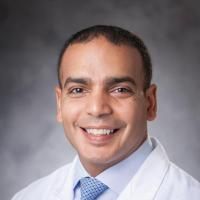
Muhammad Abd-El-Barr
As a Neurosurgeon with fellowship training in Spine Surgery, I have dedicated my professional life to treating patients with spine disorders. These include spinal stenosis, spondylolisthesis, scoliosis, herniated discs and spine tumors. I incorporate minimally-invasive spine (MIS) techniques whenever appropriate to minimize pain and length of stay, yet not compromise on achieving the goals of surgery, which is ultimately to get you back to the quality of life you once enjoyed. I was drawn to medicine and neurosurgery for the unique ability to incorporate the latest in technology and neuroscience to making patients better. I will treat you and your loved ones with the same kind of care I would want my loved ones to be treated with. In addition to my clinical practice, I will be working with Duke Bioengineers and Neurobiologists on important basic and translational questions surrounding spinal cord injuries (SCI), which we hope to bring to clinical relevance.
Unless otherwise indicated, scholarly articles published by Duke faculty members are made available here with a CC-BY-NC (Creative Commons Attribution Non-Commercial) license, as enabled by the Duke Open Access Policy. If you wish to use the materials in ways not already permitted under CC-BY-NC, please consult the copyright owner. Other materials are made available here through the author’s grant of a non-exclusive license to make their work openly accessible.
